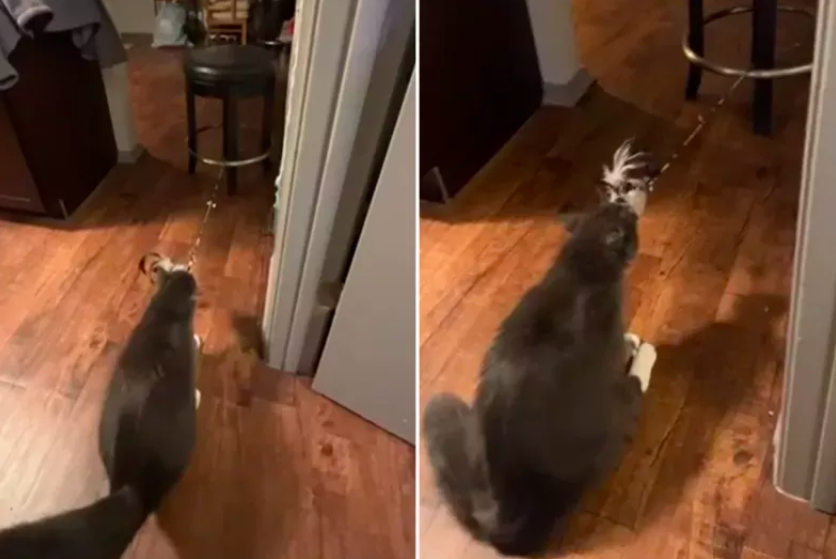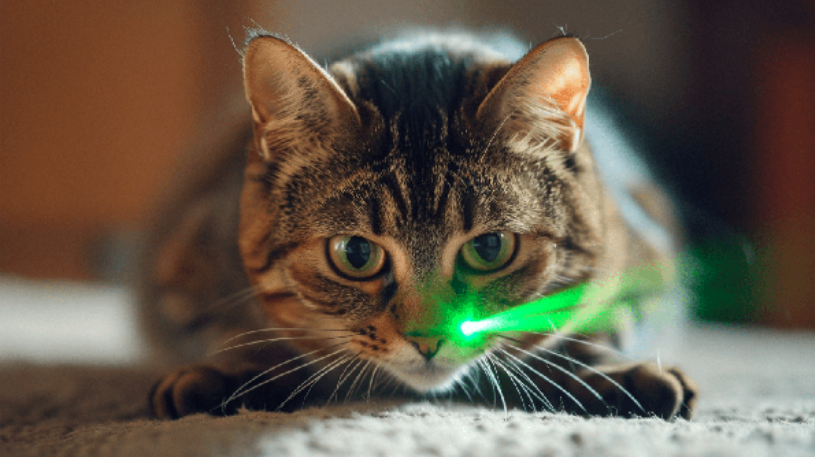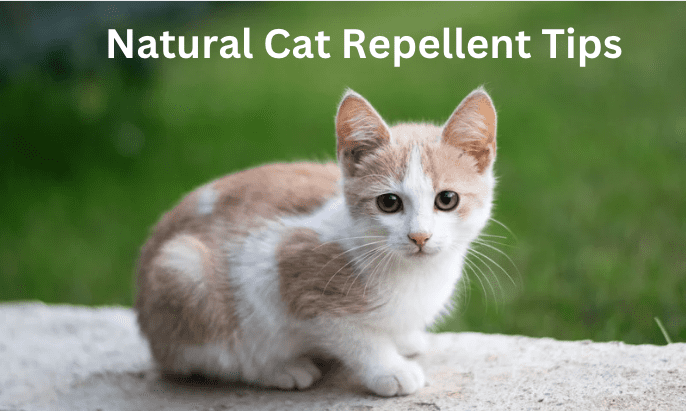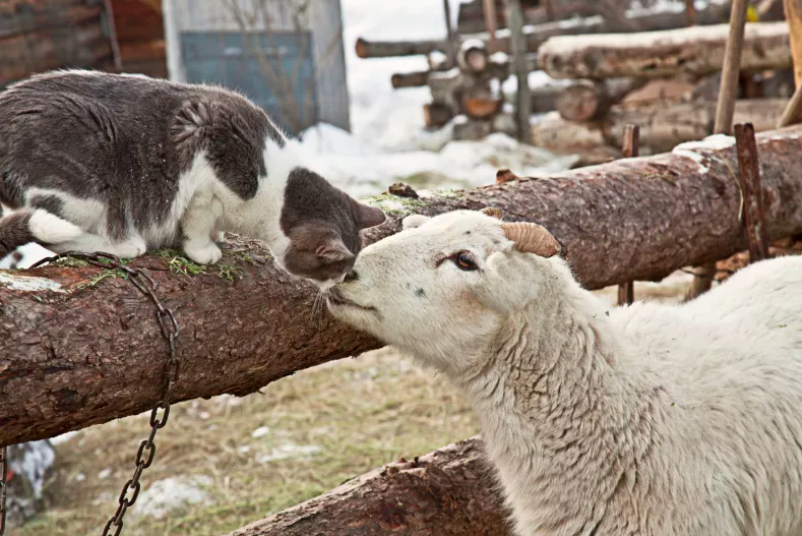Cats
When Should You bath Your Cat, And How Often Should You Do So?

When Should You Bath Your Cat, And How Often Should You Do So?
How often should you give your cat a bath? Many people have conflicting opinions on this matter. Some say once a month is the right amount of time to give your kitty a bath, while others recommend more frequently.
In this article, you’ll learn how often your cat needs to be bathed, how to keep your cat calm during the bath, and common pet pests that can cause irritation.
Once A Month.
Once a month is a good amount of time to give your cat a bath. In temperate climates, it’s okay to use the tub or sink for the bath. You should use moderate-temperature water, as cats dislike the cold and are likely to fight with you.
However, warm water may be more comfortable for cats with arthritis. Regardless of temperature, give your cat a gentle scrubbing beforehand to prepare it for bathing.
If your cat has long hair, it may require more frequent baths. Long-haired cats tend to get dirtier more quickly than short-haired cats.
Even those with short hair may need a bath every month or less frequently. In any case, it’s important to give your cat a bath at least once a month to keep its coat clean.
And if your cat has sensitive skin, you should give it a bath at least once a month to reduce the risk of scaly and greasy fur. After giving your cat a bath, rinse the cat thoroughly with clean, lukewarm water.
Make sure that all the soap is removed from the fur since a cat could accidentally swallow some of the suds while taking a bath.
A little leftover soap can be irritating to a cat’s skin and attract dirt to itself. You can also try a cat skunk spray, which is a DIY remedy that uses a mixture of liquid dishwashing soap and baking soda.
If your cat doesn’t like baths, you should get professional help. Professional cat groomers will give your cat a bath, and you will have peace of mind. Then, your cat will be happy, healthy, and clean. But remember to do it more than once a month.
There are also many benefits to bathing your cat, and you may be surprised by the results. And if you don’t want to go to a cat groomer, consider using a professional service to do it for you.
More Often For Long-haired Cats.
If you own a long-haired cat, you may wonder how often you should groom him or her. This is an easy question to answer: “As much as possible, brush your cat on a daily basis.”
However, the amount of grooming needed varies based on coat type, lifestyle, and age. Large cats and brachycephalic cats often require more grooming, especially around their eyes.
Long-haired cats require more care and attention, so grooming sessions should occur on a daily basis. Cats with long-haired coats are more prone to mating.
Their long hair is especially likely to tangle in areas of high friction, such as the armpits, belly, chest, and legs. It is also more likely to develop matting, which is the term used to describe the accumulation of loose hair.
Long-haired cats are also more prone to contract diseases like kennel cough and cat flu. The domestic long-haired cat has partial Persian ancestry and comes in all of the genetically possible colors.
Some breeds have hair up to six inches in length, similar to that of a Maine Coon. Others have manes or ear tufts. However, many long-haired cats need daily grooming to stay clean and healthy. And the more hair they have, the more likely they are to have hairballs.
But this is only a minor concern and it should not be a problem. A cat’s coat is important, and brushing it is essential for keeping it healthy. Regular brushing removes dirt and promotes healthy skin. Regular brushing will help keep the coat shiny and clean.
A simple brushing down the back will not do the trick, so spend more time on each section of the body. If you don’t have time to do this, you can try Bach flower remedies instead.
Keeping A Cat Calm While Bathing.
A bath can be stressful for a cat, so the best way to avoid the stress is to keep it calm while you bathe it. Keeping a calm cat during the bathing process is easier said than done, but it can be done.
First, prepare your cat for the bath by giving her treats and placing her in a sink with no water in it. Besides, make sure she doesn’t wet herself!
A good way to keep your cat calm while bathing is to give it something to hold onto. Keeping a calm cat can help prevent a potentially dangerous reaction, so be sure to place a window screen at a 45-degree angle.
Another tip for keeping a cat calm while bathing is to use minimal restraints. Try to speak softly to make the experience more pleasant for both of you.
During the bath, avoid using a loud spray attachment, as this can make the cat anxious. Rinse the tub well with a few cups of water.
Make sure you prepare all the bathing supplies prior to bathing your cat. Then, choose a bathtub or sink that has moderate-temperature water.
If your cat is suffering from arthritis, try giving it a bath in a warm bath. It’ll soothe his aching joints and help keep him calm.
Make sure you wash your cat thoroughly before the bath so that he doesn’t feel stressed. If you have long hair, a brush or comb will help. Before you begin a bath, brush your cat thoroughly and dress in long sleeves.
Choose a bathtub or sink with a non-slip surface, or place a laundry basket inside the tub. The water should be shallow, and no more than two to three inches deep.
The running water can frighten your cat, so avoid making it jump out of fear. If you are not sure how to keep your cat calm while bathing, try using a cat tub or sink with lukewarm water.
Common pests in cats that can cause irritation.
Cats are particularly susceptible to fleas and ticks, which can be very irritating and itch your pet. Fleas can cause scratching and red, raw, bloody sores, and can even carry diseases.
According to the Cornell Feline Health Center, 12 species of ticks are capable of transmitting feline diseases.
Fleas can lead to severe illness and can even cause engorged blood vessels. Cats also may develop anemia if they are exposed to flea-borne diseases.
In addition to irritating your cat’s skin, many other common pests can cause disease. Boxelder Bugs are a particularly bad example, and they can make your pet vomit.
While most animals avoid them, cats tend to nibble on them more often than dogs. A cat may have an allergic reaction to Boxelder Bugs, and this can lead to excessive salivation or vomiting.
Ants are another common pest in cats. They may cause skin irritation and even allergic reactions and are best avoided when possible.
Most insect bites are localized and painful. Cats may chew or lick at the sting site, hold their paw up in pain, or even have a severe anaphylactic reaction.
Swelling of the face and lungs is a serious emergency. If your pet is exposed to these pests frequently, they’re at higher risk during the spring and summer seasons.
The best way to prevent your cat from developing any type of allergic reaction is to remove the source of the pests in your home.
Mites are another common culprit for itchy skin in cats. These tiny insects burrow into the cat’s skin and cause itching and inflammation. Some species feed across the entire body, while others are restricted to certain areas.
Left untreated, an infestation can lead to chronic skin problems, open sores, and even a potentially dangerous infection. Mites are contagious and can lead to sarcoptic mange in your cat.
Avoid Bathing An Obese Cat.
If you have an obese cat, you should avoid bathing it. It can be dangerous to handle a cat that is too heavy. First, line the tub with a rubber mat. Pour lukewarm water over the cat. Do not use too much water or it could shock the cat.
Pour the water gently and avoid splashing the cat. If possible, use a hand-held spray with controlled water pressure. Water pressure that is too high can cause pain and discomfort to the cat and make it scary while bathing it.
A big part of bathing an overweight cat is that it cannot see its waistline. This is the area between the ribcage and the hips. Also, the cat is too fat to reach certain parts of the body, like the rear end. This makes it difficult to bathe him and ensure proper hygiene.
A cat with a lot of fat may not have the ability to keep up with his own hygiene. Also, an obese cat may have problems reaching parts of his body, including his rear end.
A cat’s body temperature should match that of a human. It should be warm enough for your cat to get clean and not too cold or hot for you.
If you have an obese cat, you must take extra care to avoid causing a rash. Cats with high blood pressure should be weighed and bathed only when they are well-fed.
Those with diabetes should be particularly cautious when bathing. An obese cat may also need more frequent baths because they have extra-long fur. If you are not sure if your cat needs a bath, consult your veterinarian.
Several diseases can affect a cat’s health, so bathing a cat that is overweight or obese is not a good idea. A veterinarian will be able to prescribe a medicated bath if necessary.
It is also important to remember that an older cat may need more frequent baths because it has difficulty grooming itself or reaching certain spots. While a bath is important, cats like to be clean.
We appreciate you for taking the time to read!
Finally, we hope you found this article interesting? And what do you think about ”When Should You Bath Your Cat, And How Often Should You Do So??”
Please you should feel free to share or inform your friends about this article and this site, thanks!
And let us know if you observe something that isn’t quite right.
Cats
Clever Cats: Breeds That Learn Fast

Clever Cats: Breeds That Learn Fast
Cats have always fascinated us with their agility, independence, and sometimes enigmatic behavior. Among the vast array of feline breeds, some stand out for their remarkable intelligence and ability to learn quickly.
In this article, we will delve into the world of these exceptional cat breeds, exploring their unique characteristics, training capabilities, and what makes them such quick learners.
Whether you’re a seasoned cat owner or considering adopting a new feline friend, this comprehensive guide will help you understand the breeds that are not only intelligent but also a joy to train.
Why Intelligence Matters in Cats
Understanding Feline Intelligence
Feline intelligence is a multi-faceted trait that encompasses problem-solving abilities, social learning, and adaptability. Unlike dogs, cats often showcase their intelligence in more subtle ways, such as manipulating objects to get what they want or learning routines and commands.
Benefits of Owning Intelligent Cats
Owning an intelligent cat comes with several benefits. These cats are more interactive and engaging, making them excellent companions. They can learn tricks, follow commands, and even understand basic household rules, which makes living with them more enjoyable and less challenging.
Top Cat Breeds Known for Their Intelligence
Abyssinian
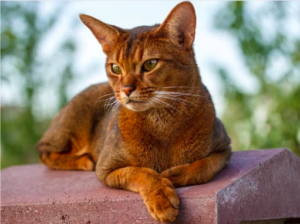
Overview
The Abyssinian is often hailed as one of the smartest cat breeds. Known for their curiosity and playful nature, Abyssinians are quick learners who thrive on mental stimulation.
Training and Activities
Abyssinians are highly trainable and enjoy interactive toys and puzzle feeders. They can learn tricks such as fetching and even walking on a leash. Their love for heights means they appreciate cat trees and climbing structures.
Siamese
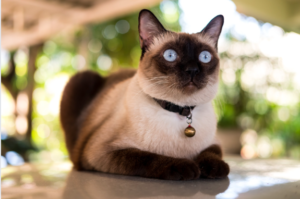
Overview
Siamese cats are not only intelligent but also highly vocal and sociable. They form strong bonds with their owners and are always eager to engage in activities.
Training and Activities
Siamese cats are quick to learn tricks and commands. They enjoy interactive play and can be trained to perform simple tasks like opening doors or retrieving items. Their vocal nature also makes them responsive to verbal cues.
Bengal
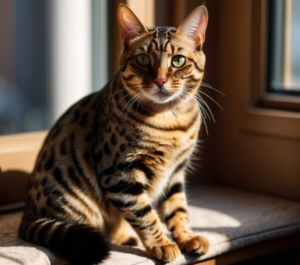
Overview
Bengals are known for their striking appearance and high energy levels. Their intelligence is reflected in their ability to solve problems and learn complex tasks.
Training and Activities
Bengals enjoy activities that challenge their minds, such as agility courses and puzzle toys. They can be trained to walk on a leash and perform tricks. Providing them with interactive playtime helps in channeling their energy positively.
Burmese
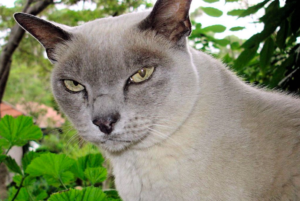
Overview
Burmese cats are affectionate, people-oriented, and intelligent. They enjoy being involved in family activities and can be trained to follow various commands.
Training and Activities
Burmese cats are quick learners and respond well to positive reinforcement. They enjoy learning tricks, playing fetch, and interactive games that stimulate their minds.
Scottish Fold
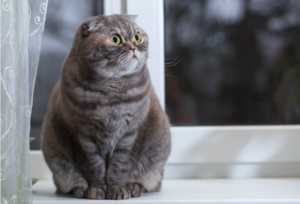
Overview
Scottish Folds are known for their distinctive folded ears and sweet demeanor. Despite their calm appearance, they are intelligent and can learn quickly.
Training and Activities
Scottish Folds enjoy interactive toys and games. They can learn tricks and commands and appreciate routines that keep their minds engaged.
Training Tips for Intelligent Cats
Start Early
Begin training your cat as early as possible. Kittens are more receptive to learning new behaviors and routines.
Use Positive Reinforcement
Reward your cat with treats, praise, or playtime whenever they successfully perform a desired behavior. Positive reinforcement strengthens the association between the action and the reward.
Keep Sessions Short and Fun
Cats have shorter attention spans than dogs, so keep training sessions brief and enjoyable. Incorporate playtime to make learning fun for your cat.
Be Patient and Consistent
Patience and consistency are key when training cats. Repeat commands and routines regularly, and avoid punishing your cat for mistakes. Consistency helps reinforce learning and builds trust.
Challenges of Training Intelligent Cats
Independence and Stubbornness
Intelligent cats can sometimes be independent and stubborn. They might choose to ignore commands if they are not in the mood, so it’s important to understand their behavior and work with it.
Need for Mental Stimulation
Highly intelligent cats require constant mental stimulation. Boredom can lead to behavioral issues, so ensure they have plenty of toys, activities, and interaction to keep their minds engaged.
Managing High Energy Levels
Breeds like Bengals have high energy levels that need to be managed. Providing them with enough physical and mental exercise is crucial to prevent destructive behavior.
Living with Intelligent Cats
Creating an Enriched Environment
An enriched environment is essential for intelligent cats. This includes a variety of toys, climbing structures, scratching posts, and interactive feeders to keep them stimulated.
Social Interaction
Intelligent cats thrive on social interaction. Spend quality time playing, training, and simply bonding with your cat to ensure they feel valued and engaged.
Understanding Their Needs
Each intelligent breed has its own unique needs and preferences. Understanding these and catering to them will help you build a strong and positive relationship with your cat.
Conclusion
Owning an intelligent cat can be an incredibly rewarding experience. These quick learners bring joy, challenge, and companionship to their owners. By understanding their unique characteristics and providing the right environment and training, you can foster a deep and fulfilling relationship with your feline friend.
Whether you choose an Abyssinian, Siamese, Bengal, Burmese, or Scottish Fold, you’re sure to enjoy the remarkable intelligence and personality they bring into your home.
Frequently Asked Questions (FAQs)
What makes a cat breed intelligent?
Intelligent cat breeds often show high levels of problem-solving abilities, adaptability, and social learning. They can quickly learn commands, tricks, and routines.
Can all cats be trained?
While some breeds are more receptive to training than others, all cats can be trained to some extent. Patience, consistency, and positive reinforcement are key to successful training.
What are the best toys for intelligent cats?
Interactive toys, puzzle feeders, and climbing structures are ideal for intelligent cats. These toys provide mental stimulation and keep them engaged.
How do I keep my intelligent cat from getting bored?
Provide a variety of toys, engage in regular playtime, and introduce new activities regularly. Rotating toys and creating an enriched environment also help prevent boredom.
Are intelligent cats more difficult to care for?
Intelligent cats can be more demanding in terms of mental stimulation and interaction. However, with the right approach and environment, they can be delightful companions.
We appreciate you for taking the time to read this article!
Finally, we hope you found this article interesting? And what do you think about ”Clever Cats: Breeds That Learn Fast!?”
Please feel free to share or inform your friends about this article and this site, thanks!
And let us know if you observe something that isn’t quite right.
Cats
The Enchanting Scottish Fold: A Guide to the Adorable Feline with Folded Ears
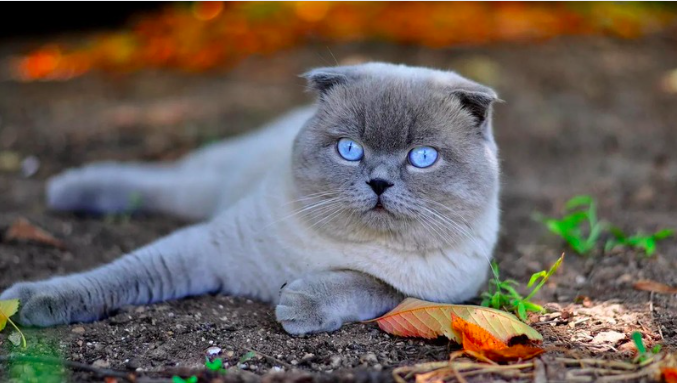
The Enchanting Scottish Fold: A Guide to the Adorable Feline with Folded Ears
Welcome to the world of the Scottish Fold cat, where charm and curiosity meet in an irresistibly adorable package. With their distinctive folded ears and sweet expression, Scottish Folds have captured the hearts of cat lovers around the world. Originally hailing from Scotland, these cats are known for their gentle demeanor, playful nature, and loving personality.
In this comprehensive guide, we will delve into the fascinating world of Scottish Fold cats, exploring their history, physical characteristics, personality traits, and care requirements. Whether you’re a seasoned cat owner or considering adding a feline friend to your family, the Scottish Fold’s unique charm and affectionate nature make them a delightful addition to any home. Join us as we unravel the enchanting tale of the Scottish Fold cat and discover why they are such beloved companions.
Fold
Overview
The Scottish Fold cat is a charming and distinctive breed known for its unique folded ears and sweet expression. Originating from Scotland in the 1960s, these cats have captured the hearts of many with their endearing appearance and affectionate nature. Scottish Folds are known for their gentle and loving temperament, making them wonderful companions for families and individuals alike.
History and Origins
The Scottish Fold breed traces its roots back to a white barn cat named Susie, who was found in Scotland in the early 1960s. Susie had a unique genetic mutation that caused her ears to fold forward, giving her an owl-like appearance. This trait was passed down to her kittens, and thus, the Scottish Fold breed was born. The breed quickly gained popularity for its distinctive look and friendly demeanor, and it was officially recognized by cat registries in the 1970s.
Physical Characteristics
- Folded Ears: The most distinctive feature of the Scottish Fold is its folded ears, which give the cat a sweet and owl-like appearance. Not all Scottish Folds have folded ears; some may have straight ears, known as “straights,” which are also common in the breed.
- Coat and Colors: Scottish Folds can have either a short or long coat, both of which are dense and plush. They come in a variety of colors and patterns, including tabby, tortoiseshell, and solid colors like white, black, and blue.
- Body Structure: Scottish Folds are medium-sized cats with a rounded appearance. They have sturdy bodies, round faces, and large, expressive eyes that give them a sweet and gentle expression.
Personality and Behavior
Scottish Folds are known for their calm and laid-back demeanor. They are affectionate cats that enjoy being around people and are often described as “lap cats” due to their love of cuddling. They are also known for their playful nature and enjoy interactive toys and games. Scottish Folds are generally good with children and other pets, making them a great choice for families.

Health and Care
- Ear Care: Due to their folded ears, Scottish Folds may be prone to ear infections. It’s important to regularly check and clean their ears to prevent issues.
- Grooming: Scottish Folds have dense coats that require regular grooming to prevent matting and tangling. Weekly brushing is usually sufficient to keep their coat in good condition.
- Health Concerns: Scottish Folds are generally healthy, but they may be prone to certain genetic conditions, including a skeletal disorder known as osteochondrodysplasia. Responsible breeding practices can help minimize the risk of these health issues.
Training and Activities
Scottish Folds are intelligent cats that can be trained to perform tricks and commands. They enjoy interactive play and benefit from toys that stimulate their minds and bodies. Providing them with scratching posts and other outlets for their natural behaviors can help keep them happy and healthy.
Compatibility with Families and Other Pets
Scottish Folds are known for their gentle and affectionate nature, making them great companions for families. They are good with children and other pets, including dogs, and can adapt well to different environments. Their loving and sociable nature makes them a popular choice for households looking for a friendly and affectionate pet.
Conclusion
The Scottish Fold cat is a unique and charming breed known for its folded ears and sweet expression. With their gentle demeanor and affectionate nature, Scottish Folds make wonderful companions for families and individuals alike. Whether you’re looking for a lap cat to cuddle with or a playful friend to keep you entertained, the Scottish Fold cat is sure to bring joy and companionship to your home.
FAQs about Scottish Fold Cats
Why do Scottish Folds have folded ears?
Scottish Folds have a genetic mutation that affects the cartilage in their ears, causing them to fold forward. This unique trait gives them their distinctive appearance.
Are Scottish Folds prone to ear problems due to their folded ears?
Yes, Scottish Folds may be more prone to ear infections due to the fold in their ears, which can trap dirt and moisture. Regular cleaning and monitoring of their ears can help prevent issues.
Do Scottish Folds have any health issues associated with their folded ears?
Scottish Folds may be prone to a condition called osteochondrodysplasia, which affects the development of their cartilage and bones. Responsible breeding practices can help reduce the risk of this condition.
Are Scottish Folds good with children and other pets?
Scottish Folds are known for their gentle and friendly nature, making them good companions for families with children and other pets. They enjoy socializing and being part of the family.
Do Scottish Folds require a lot of grooming?
Scottish Folds have dense coats that require regular grooming to prevent matting and tangles. Weekly brushing is recommended to keep their coat in good condition.
We appreciate you for taking the time to read this article!
Finally, we hope you found this article interesting? And what do you think about ”The Enchanting Scottish Fold: A Guide to the Adorable Feline with Folded Ears!?”
Please feel free to share or inform your friends about this article and this site, thanks!
And let us know if you observe something that isn’t quite right.
Cats
The Enchanting Burmese Cat: Affectionate, Playful, and Loyal
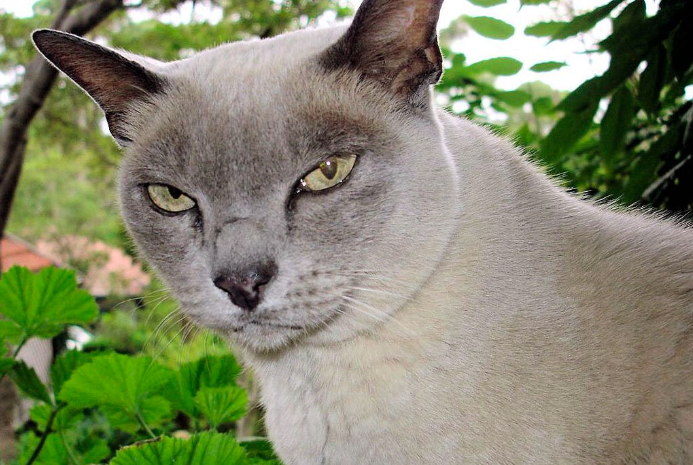
The Enchanting Burmese Cat: Affectionate, Playful, and Loyal
Enter the world of the Burmese cat, where elegance meets affection in a charming feline companion. Originating from the temples of Burma, these cats have captured the hearts of cat lovers worldwide with their striking appearance and loving nature. With their sleek coats, expressive eyes, and playful demeanor, Burmese cats are not just pets; they are cherished members of the family.
In this comprehensive guide, we delve into the captivating world of Burmese cats, exploring their history, physical characteristics, personality traits, and care requirements. Whether you’re a seasoned cat owner or considering adding a feline friend to your family, the Burmese cat’s unique blend of beauty, intelligence, and affection is sure to captivate you. Join us as we unravel the enchanting tale of the Burmese cat and discover why they are such beloved companions.
Burmese
Overview
The Burmese cat is a breed known for its striking appearance and affectionate nature. Originating from Burma (now Myanmar), these cats are renowned for their sleek, muscular bodies, expressive eyes, and silky coats. Burmese cats are often described as “people-oriented,” as they form strong bonds with their human companions and enjoy being part of the family. Their playful and curious nature makes them delightful companions for both children and adults alike.
History and Origins
The history of the Burmese cat can be traced back to ancient Burma, where they were considered sacred and kept by monks in temples. They were later brought to the West in the early 20th century and quickly gained popularity for their striking appearance and affectionate personality. The breed has since become a favorite among cat enthusiasts worldwide, known for its loving and loyal nature.
Physical Characteristics
- Coat and Colors: Burmese cats have short, sleek coats that lie close to the body. They come in a variety of colors, including sable, champagne, blue, and platinum. The coat is soft and silky to the touch, adding to the breed’s overall charm.
- Body Structure: Burmese cats are medium-sized with a muscular build. They have rounded heads, large, expressive eyes, and short, straight noses. Their compact bodies give them a sturdy appearance, and they move with grace and agility.
- Eyes and Ears: Their eyes are one of their most striking features, being large, expressive, and usually a deep, rich color that complements their coat. Their ears are medium-sized, slightly rounded at the tips, and set wide apart on the head.
Personality and Behavior
Burmese cats are known for their affectionate and sociable nature. They are often described as “dog-like” due to their tendency to follow their owners around the house and seek out human companionship. They are also highly intelligent and enjoy interactive play, making them great companions for families with children or other pets.
In addition to their affectionate nature, Burmese cats are also known for their vocalizations. They have a soft, sweet voice that they use to communicate with their owners, often engaging in “conversations” and expressing their needs and desires.
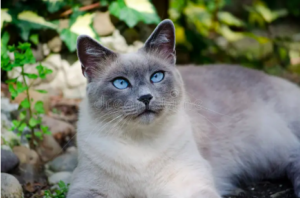
Health and Care
- Grooming: Burmese cats have short coats that require minimal grooming. Weekly brushing is usually sufficient to remove loose hair and keep their coat shiny. They also benefit from regular dental care to prevent oral health issues.
- Diet: A high-quality, balanced diet is essential for maintaining the health and vitality of Burmese cats. They should be fed a diet that is appropriate for their age, size, and activity level to ensure they receive the nutrients they need.
- Health Concerns: Burmese cats are generally healthy, but they can be prone to certain genetic conditions such as hypertrophic cardiomyopathy (HCM) and diabetes. Regular veterinary check-ups and a healthy diet can help manage these risks.
Training and Activities
Burmese cats are intelligent and can be trained to perform various tricks and commands. They enjoy interactive play and thrive on mental stimulation. Providing them with toys, puzzle feeders, and opportunities for play can help keep them entertained and prevent boredom.
Compatibility with Families and Other Pets
Burmese cats are known for their loving and social nature, making them great companions for families. They get along well with children and other pets, including dogs, as long as they are properly introduced. Their affectionate demeanor and playful nature make them a popular choice for households looking for a friendly and engaging pet.
Conclusion
The Burmese cat is a breed beloved for its affectionate nature, striking appearance, and playful personality. Whether you are looking for a loyal companion or a playful friend, the Burmese cat is sure to bring joy and warmth to your home. With their loving nature and sociable demeanor, Burmese cats make wonderful pets for families and individuals alike, enriching their lives with their presence and affection.
FAQs about Burmese Cats
What is the temperament of a Burmese cat like?
Burmese cats are known for their affectionate and social nature. They are often described as “dog-like” due to their loyalty and tendency to follow their owners around the house. They enjoy being involved in family activities and form strong bonds with their human companions.
Are Burmese cats good with children and other pets?
Yes, Burmese cats are generally good with children and other pets. They are playful and enjoy interactive play, making them great companions for families with children. They also get along well with other pets, including dogs, especially if they are introduced properly.
Do Burmese cats require a lot of grooming?
Burmese cats have short, sleek coats that require minimal grooming. Weekly brushing is usually sufficient to remove loose hair and keep their coat shiny. They also benefit from regular dental care to prevent oral health issues.
Are Burmese cats vocal?
Burmese cats are known for their soft, sweet voice, but they are not excessively vocal. They use their voice to communicate with their owners, often engaging in “conversations” and expressing their needs and desires.
What kind of environment is best for a Burmese cat?
Burmese cats thrive in environments where they have plenty of opportunities for play and interaction. They enjoy being part of the family and should have access to toys, scratching posts, and other enrichment activities. They also enjoy having access to outdoor enclosures or safe outdoor spaces where they can explore and indulge their natural instincts.
We appreciate you for taking the time to read this article!
Finally, we hope you found this article interesting? And what do you think about ”The Enchanting Burmese Cat: Affectionate, Playful, and Loyal!?”
Please feel free to share or inform your friends about this article and this site, thanks!
And let us know if you observe something that isn’t quite right.
-

 Pet Care2 years ago
Pet Care2 years agoThe Best Dog Collars For 2022
-

 Dogs2 years ago
Dogs2 years agoBichon Frise: The Happy, Playful, and Cuddly Companion
-

 Trending Pet Stories1 year ago
Trending Pet Stories1 year ago2023 ‘World’s Ugliest Dog’ Winner: Scooter’s Tale of Resilience
-

 Animals3 years ago
Animals3 years agoAre There Animals Having Down Syndrome?
-

 Pets2 years ago
Pets2 years agoThe Fascinating World Of The Red Chameleon
-

 Dogs3 years ago
Dogs3 years agoTop 10 Most Popular Dog Breeds According To AKC.
-

 Dogs3 years ago
Dogs3 years ago21 Dog Breeds That Resemble Bears Or Teddy Bears!
-

 Dogs3 years ago
Dogs3 years agoEskimo Dogs from Canada – What Are They? – Find Out!


